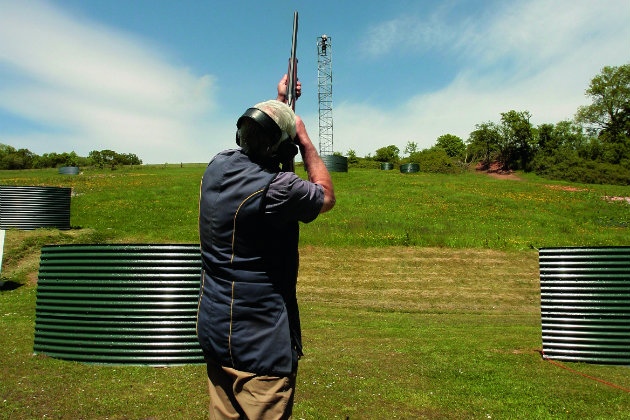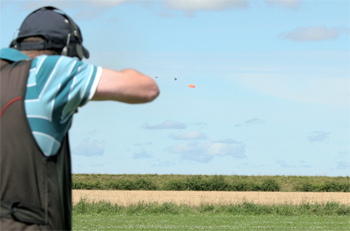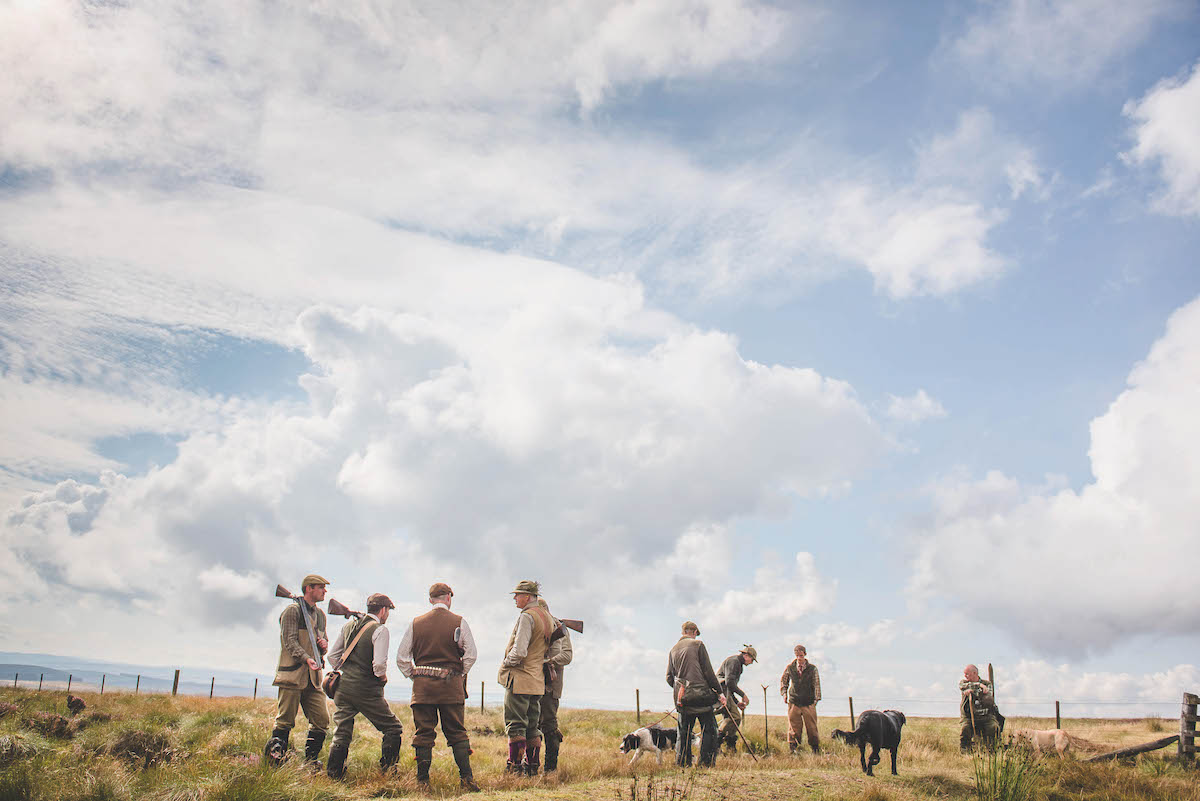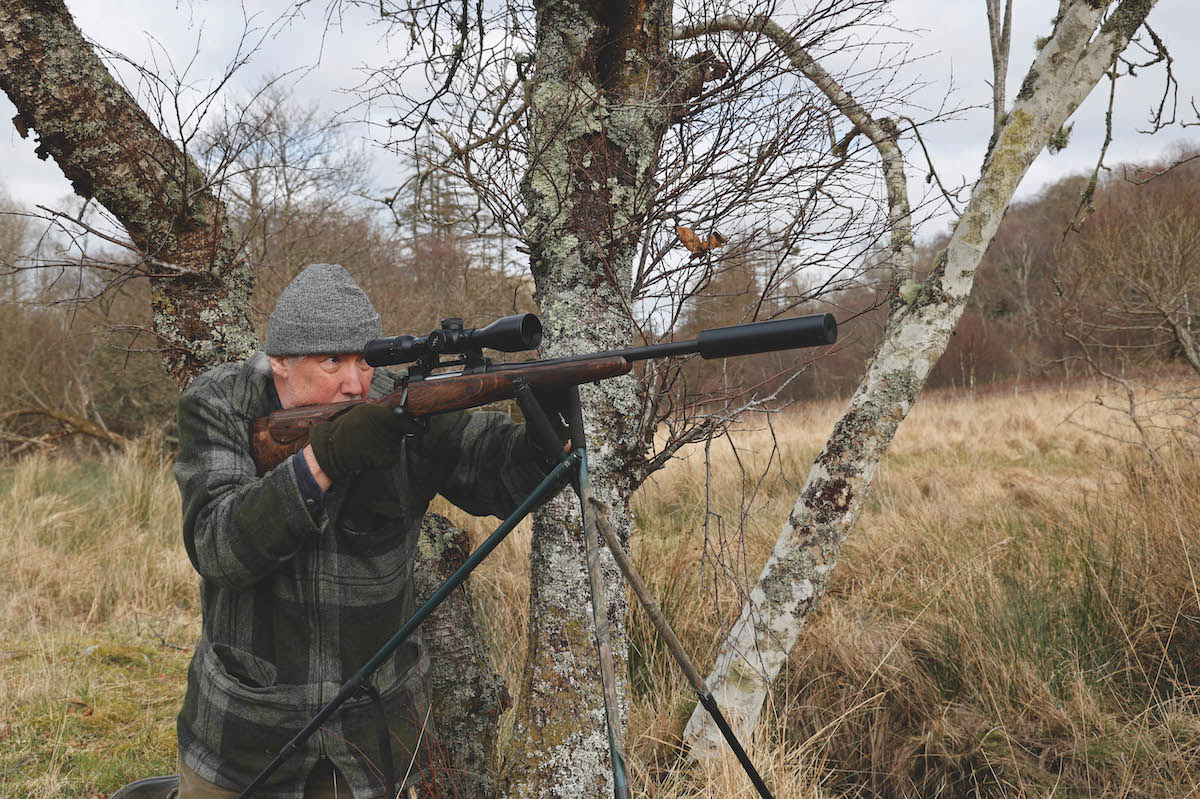Four shooting myths you should ignore
Don’t waste your time fretting about lead or keeping both eyes open — Tom Payne highlights some common shooting myths and explains why they are wrong

At a clay ground, practise under simulated birds to improve your gameshooting consistency
1. Clay practice will improve your gameshooting
Practising on clays is something many gameshooters shy away from. Most will wait until the first day or until all has gone wrong before putting in some practice. I have never understood this mentality and it is frustrating listening to some of the excuses for not practising. The most common comment I hear is that clays have nothing in common with game, or that clays slow down and game speeds up. This is completely correct if you are shooting at stereotypical clayshooting targets. Practising on chondels, battues, bolting rabbits or springing teals will be of no benefit to your driven gameshooting because they do not represent quarry in any way. They only benefit the shooter who is hoping to improve their clayshooting. If you are going to practise on clays it is vital that you stand under good simulated targets that offer the correct angles and speeds of the birds you are hoping to shoot.
That being said, don’t shun the clay ground. Pre-season practice is important and if instructed correctly under good simulated birds it can really help get your season off to a flyer. Make your gameshooting an all-year-round hobby; just imagine there are feathers on the clay.

Rather than obsessing over lead, you should make sure you understand the reason you stop your gun
2. Make lead a priority
What is the obsession with lead when it comes to shooting game, and why is it the priority of most Guns and instructors? Unless someone is a mathematical genius and not only able to work out the speed of an individual’s gun-mount, body movement and varying eyesight but also the speed of shot at distance through a certain choke, I cannot understand how they are able to calculate this distance so accurately. The truth is they can’t. Some of the distances you hear mentioned on a day’s shooting are truly ridiculous, to the point that if this predicted distance and expert advice were followed the bird in question would probably still be in cover as the shot is fired. If a Gun misses a bird, their first thought is that they were behind — or this is what they are told. But there are so many reasons as to why a bird is missed.
Lead, and what a Gun sees as lead, is a personal thing. It is also the end product of a shot. Every Gun’s eyesight is different, the way they shoot may be different, their gun speed may be different — there are many variables. By thinking lead first, you are effectively using a shotgun as a measuring tool. How many Guns reading this article have been told that they stop their gun, but have never been told why? Most Guns on being told that they stop a gun move their gun faster or they are encouraged to give birds more lead. If you move too fast you will lose all control and end up rushing; all technique will go out the window.
If you end up giving the bird more lead because the reason for you stopping the gun hasn’t been explained, two things will happen. First, you could give the bird more lead, continue to stop the gun but luckily get your timing right, killing an unfortunate pheasant. Second, you could stick to the standard, give the bird however many feet, keep watching the bird and start missing in front. You will still think you are behind and so off you go farther and farther until the wheels fall off completely.

Keep your focus on the bird – looking at your gun at the vital moment will cause you to stop moving it and miss
3. Stopping your gun
To shoot well you must keep your gun moving. The reason shooters stop their gun is because they suddenly look at it at the point of pulling the trigger. This is known as checking your swing and should be avoided. As soon as you look at your gun at the vital moment, your gun will stop stone dead. You will inevitably end up missing behind, but you can also pull your gun off-line because you no longer have any momentum in the movement of your gun. What you have seen lead-wise may have been correct prior to pulling the trigger, but it will be cancelled out as your gun slows and stops.
It is like any ball game. If you look at your cricket bat as you are about to hit the ball it goes wrong. You don’t run around a tennis court staring at your racket, and you certainly don’t look at your hands when you are trying to catch a ball. You are aware of where your hands, bat or racket are in your peripheral vision but your focus stays on the ball.
By being told to give a bird lead in whatever distance, you are being cheated into killing a bird. The key is that you are able to get yourself there. Shooting game is not a guessing game. The feeling you have when you know a bird is about to die comes when you have correctly read the bird yourself. It is not about throwing a gun out to what you have been told, luckily connecting and thinking to yourself “how did I do that?”. You cannot stand there looking at a bird and think, “I think that needs 10ft”. All that will happen is you will go to what you feel is the finished product and cheat the shot. This will bring no consistency to your shooting.

If you shoot well with an eye closed and are not shooting too often, you should be okay
4. Shoot with both eyes open
As you all know, a shotgun is designed to be shot with both eyes open. With correct and consistent gun-mounting and proper gun fit, the gun will shoot where you look. However, this all depends on whether your right eye is the dominant eye for a right-hander or the left eye for a left-hander. Another factor that affects this ability is your hand-to-eye co-ordination. Everyone is different and some may be completely lost shooting with both eyes open.
The dominant eye — the eye that is stronger — normally corresponds with the hand that you use. The dominant eye should look along the centre of the rib out towards the bird. This will enable the shooter with sound gun-mount and technique to pick the bird up correctly, reading speed, distance and direction to make the shot. If your opposite eye is the dominant one, you will miss the line of the bird and completely misread the shot.
There are lots of tests to check your master eye. I tend not to get too carried away and will always make the judgement on the way a client handles a gun, with a few checks I do without making it obvious that I’m checking his or her eyes. Simple is best.
I would always advise a novice Shot to keep an eye shut to begin with. This enables the shooter to build a relationship with the gun, understanding how it should feel against the face and shoulder during correct gun-mount. When the time is right, I can move them on to keeping both eyes open if I feel it is right to do so. However, if the client shoots well and consistently with an eye dimmed or closed, and they are planning on doing relatively little shooting, then I see no need to change it.
Your gun choice is important
Think about:
- Gun quality: a good investment will be a well-made and reliable gun that won’t let you down if you look after it well.
- Compatibility: your size and strength will determine the bore of the gun and its weight.
- Gun fit: a gun must fit properly for you to shoot at your best.
- Barrel length: I’d recommend 30in barrels across the board for novices or anyone who shoots a reasonable amount. Short barrels do not give you as much control.
- Chokes: Ideal chokes would be half and half or three-quarters and three-quarters fixed. These are good all-round game chokes.
Is the shooting technique I’ve read about correct?
Shooting advice: I’ve read a book on skeet clay shooting written by an American coach who says the knee on…
How to improve your pheasant shooting technique
Here are some pheasant shooting techniques to help you in the field Footwork and balance In all forms of driven…
Top tips for a successful pigeon shooting technique
I am so fortunate to be out and about shooting pigeon all the time. I’ve had the privilege to learn from some of…












